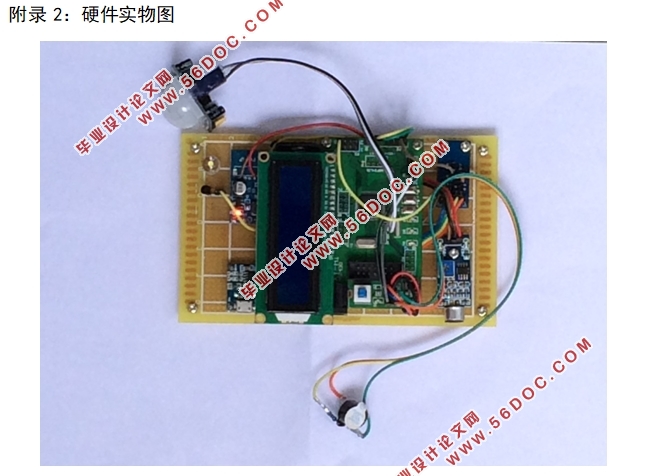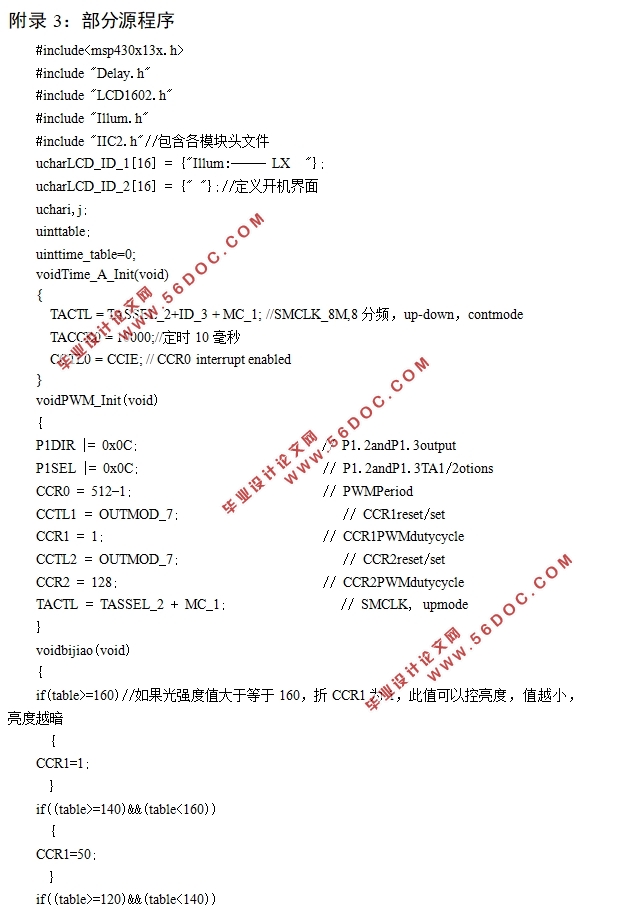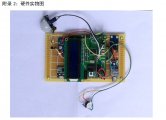基于MSP430单片机的智能控制台灯设计(附程序清单)
来源:56doc.com 资料编号:5D21661 资料等级:★★★★★ %E8%B5%84%E6%96%99%E7%BC%96%E5%8F%B7%EF%BC%9A5D21661
资料以网页介绍的为准,下载后不会有水印.资料仅供学习参考之用. 密 保 惠 帮助
资料介绍
基于MSP430单片机的智能控制台灯设计(附程序清单)(论文11700字)
摘要:本文设计和实现了基于MSP430单片机的智能台灯系统,该系统由单片机控制芯片、光强度传感器、红外传感器、声波传感器等硬件设备构成,利用这三个传感器捕获周围的光亮、人体红外和声波,进而控制灯的亮灭和强度。本文提出的智能台灯系统具有低功耗,高稳定性和保护视力的优点。与传统的台灯相比,使用方便,不仅提升了台灯的品质,可以满足人们日常生活的需求。
关键词:单片机;人体感应;声控模块;光控模块;充电模块
Design of Intelligent Table Lamp Based on MSP430 Single Chip Microcomputer
Abstract:This paper designs and implements an intelligent system for table lamp based on MSP430 microcomputer. The system consists of control chip of MSP430 single chip microcomputer, light intensity sensor, infrared sensor, acoustic wave sensor and other hardware equipment. It makes use of light, infrared ray of the human body and acoustic wave which are captured from three sensors separately to control the intensity and brightness of light. Finally, experimental result shows the proposed intelligent system for table lamp is lower power consumption and high stability. In addition, it also plays the role of protecting eyesight. Compared with the traditional table lamp, the proposed system is convenient andit can meet people’s need for daily life.
Key words: Single chip microcomputer; Human body induction; Acoustic control module; Optical module; Charging module


目 录
1. 引言 6
1.1 课题应用背景 6
1.2 本课题的设计思路 6
2. 系统方案及原理 6
2.1 系统设计的目标 6
2.2 语音识别的工作原理 7
2.3 热释电红外感应的工作原理 7
2.4 数字光强度感应的工作原理 7
2.5 系统设计的总体方案 7
3. 硬件设计 8
3.1 控制模块 8
3.1.1 MSP430系列单片机的特点 8
3.1.2 MSP430单片机的主要功能 9
3.1.3 MSP430的方框图 9
3.1.4 MSP430单片机的最小系统 10
3.2 声音控制模块 10
3.2.1 声音传感器原理图 10
3.2.2 YL-56声音传感器介绍 11
3.2.3 LM393双电压比较器 11
3.2.4 声音控制电路 12
3.3 人体感应模块 13
3.4 光强度检测模块 15
3.4.1 BH1750简介 15
3.4.2 光强度检测电路 16
3.5 PWM调光模块 17
3.5.1 PWM调光工作原理 17
3.5.2 PWM调光电路 17
3.6 蜂鸣器提醒模块 18
3.7 充电模块 18
3.7.1 充电模块工作原理 18
3.7.2 充电电路 18
3.8 升压模块 19
4. 软件设计 19
4.1 软件开发环境简介 19
4.2 系统总体流程图 20
4.3 定时模块流程图 20
5. 实物制作与调试 21
5.1 硬件电路调试 21
5.2 调试结果分析 21
6. 总结与展望 23
6.1 总结 23
6.2 展望 23
参考文献 23
附录1:总电路原理图 25
附录2:硬件实物图 26
附录3:部分源程序 27
致谢 31
|





